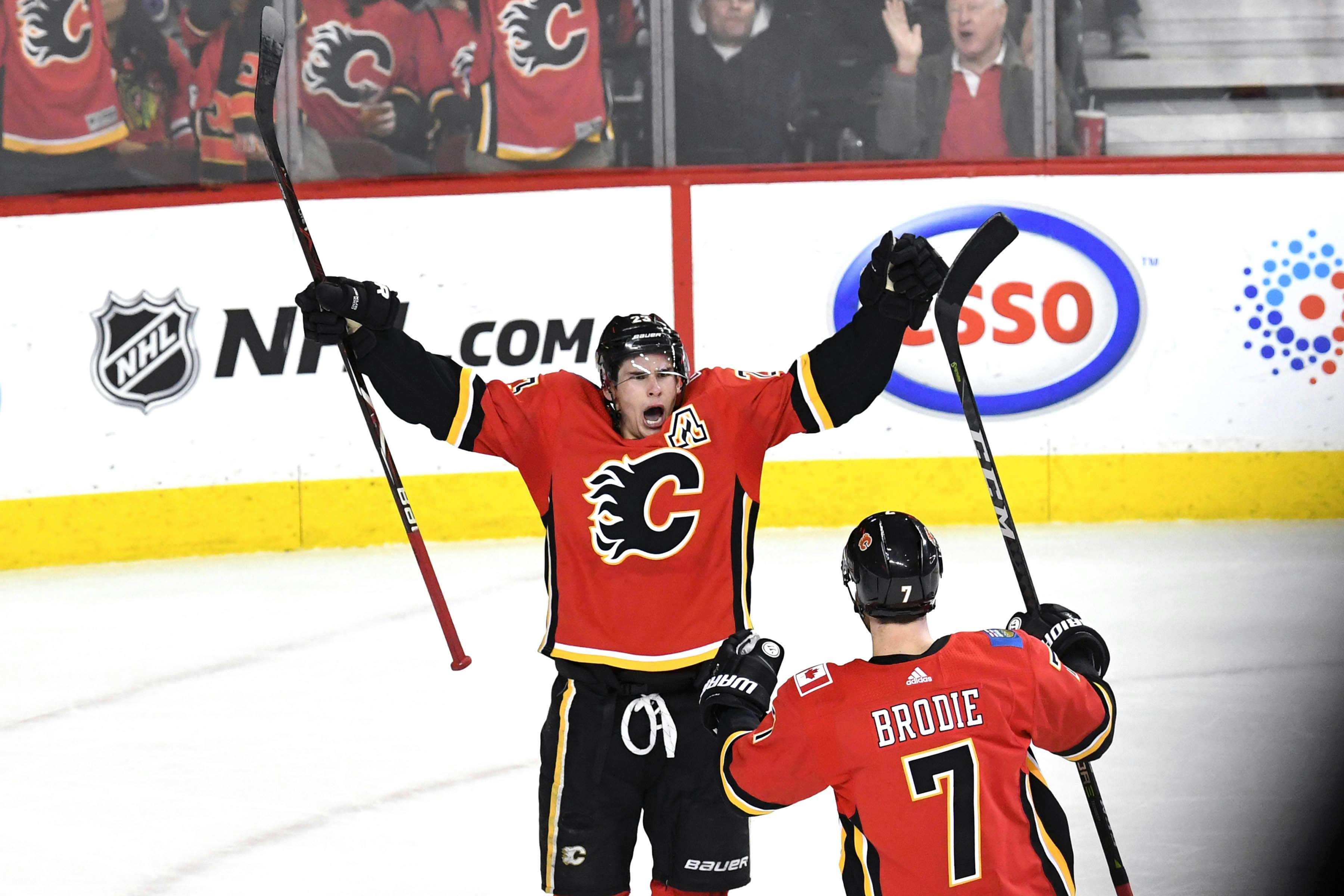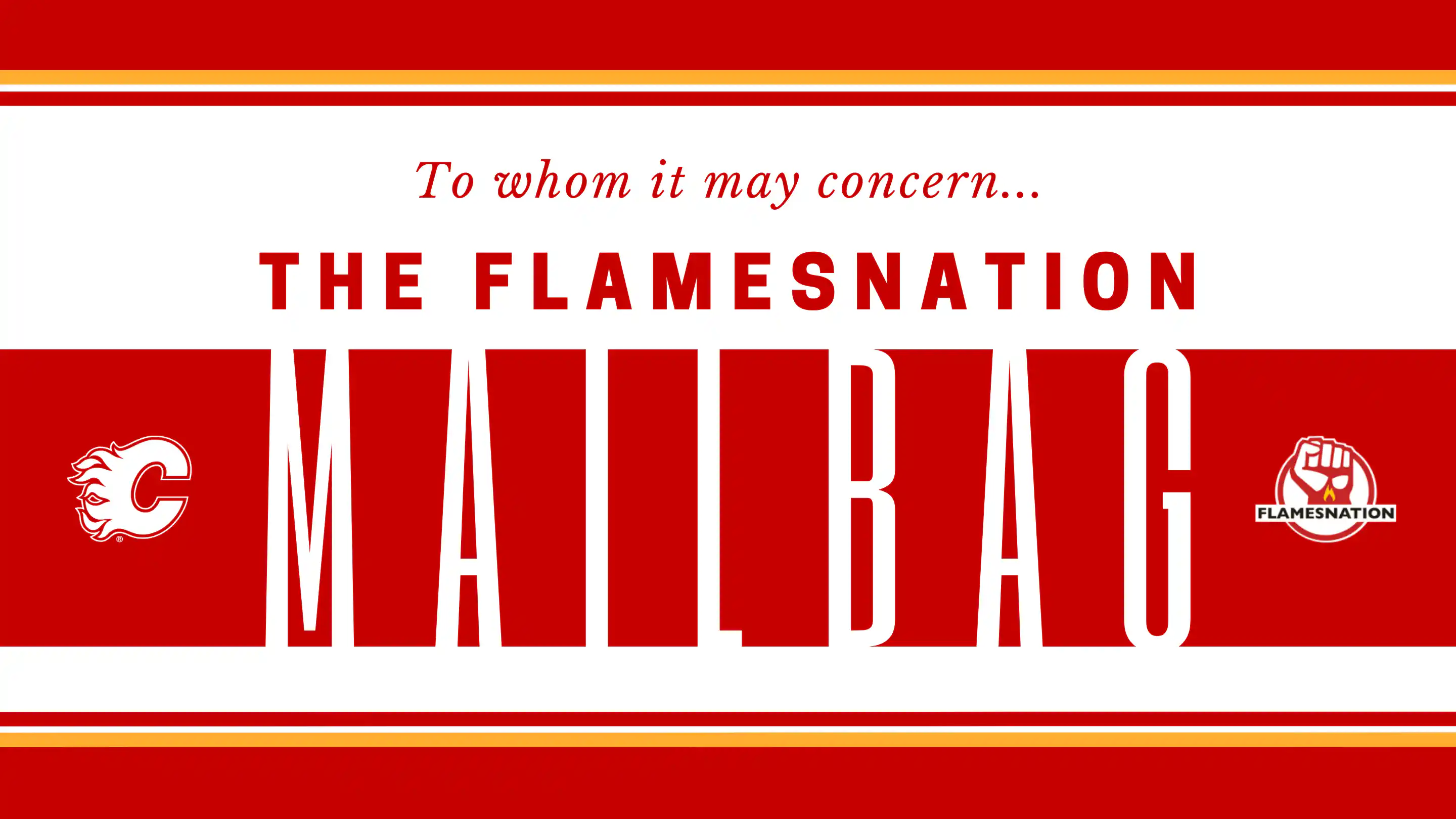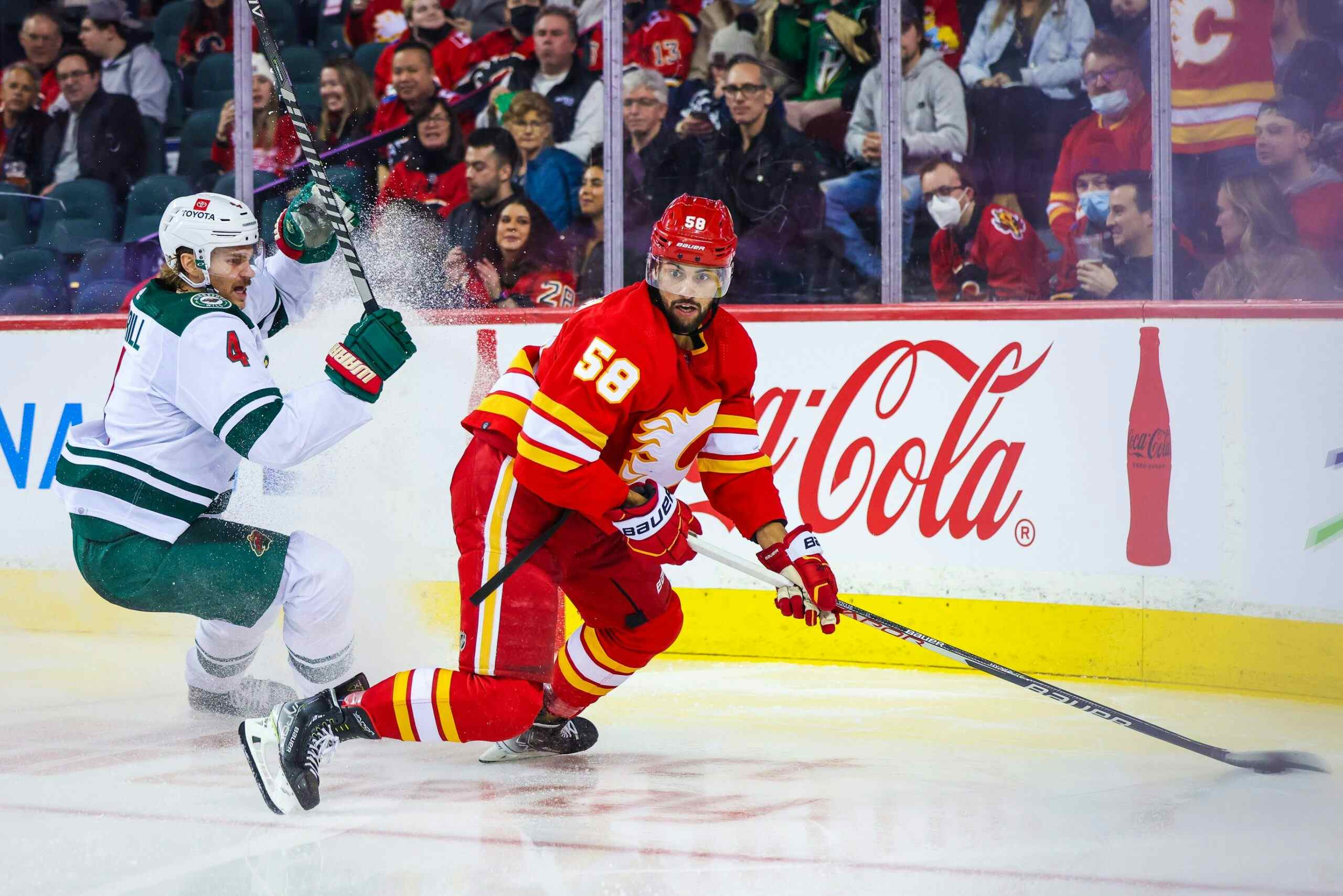FlamesNation player evaluations: Sean Monahan

Sean Monahan has been one of the most reliably productive and strongest players for the Flames in recent memory, perhaps the closest thing they’ve had to a true first line centre since Daymond Langkow. Even in a season marked by injury, inconsistency, and an awful powerplay, Monahan had a career year and shows plenty of promise headed into next season.
2017-18 season summary
Monahan held down the same role as he has had since the 2014-15 season: playing on the first line with Johnny Gaudreau, being a mainstay on the first powerplay unit, and generally trusted to score goals. And he pretty much did just that. This season was his fourth year in a row picking up 25+ goals (second 30-goal season) and 30+ assists.
| Games Played | Goals | Assists | Points | TOI/GP | 5v5 CF% | 5v5 CF% rel | OZS% | PDO |
| 74 | 31 | 33 | 64 | 13:39 | 54.75 | 1.94 | 57.64 | 1.013 |
Monahan’s season was marked by scoring ebbs and flows. For example, he picked up 22 points in his first 20 games of the season, picking up points in all but six of those games. In the next 20, he picked up 14 points. A modest drop off, but he was held off the scoresheet in 11 of those games. The next 20 saw him bounce back to a near point-per-game rate, scoring 19 points and only picking up donuts in seven of those games. He trailed off to nine points in his last 14 games of the season before he was shut down.
Part of that was due to the frustrating inconsistencies of the first line in general. Although Micheal Ferland has been one of the only RWs to work well with Monahan and Gaudreau for more than just a portion of one season, he was simply not first line calibre for the whole year. When Ferland couldn’t hold up his end of the bargain, the burden shifted to Monahan and Gaudreau, which was occasionally overwhelming. Experiments with Jaromir Jagr, Troy Brouwer, and Michael Frolik were also less than fruitful.
And it wouldn’t be an article about the 2017-18 Flames without whining about the powerplay. Despite being one of the only functioning pieces on the powerplay (most individual shots, second in points, career year in CF/60 and SF/60), Monahan finished the season with a modest 19 powerplay points. One could only imagine how high his totals would be if the powerplay was actually able to do something.
It’s also important to mention that he played those last ~20 games through injures that later required four offseason surgeries, including one wrist surgery. This was the first year since his rookie season where he missed extended time (eight games) with an injury, but he certainly could’ve missed much more. His production in spite of the injuries is pretty impressive.
Compared to last season
Monahan had the strongest season of his career by far. Adjusted for a full season, Monahan had highs in goals, assists, and points. Had he played those last eight games, he would’ve certainly cracked the 70-point mark for the first time in his career. If he was actually fully healthy for the whole season, we can only speculate that he might’ve just hit 80. That’s pretty good.
Part of this is related to the great strides he made to become a better offensive weapon. Many of his shot attempts against/60 numbers stayed about the same (his CA/60 was 0.15 attempts better per hour from last year. An improvement technically, but not anything game changing), but he increased his CF/60 and FF/60 by about 10 attempts per hour. His SF/60 also went up by about five shots per hour, which meant about one goal per hour more than last season.
This season, Monahan enjoyed a 4% bump in CF%, even with a slight reduction in offensive zone starts. This trend carried over through many of his other fancy stats. He was finally a 50%+ player in fenwick for%, shots for%, and high danger scoring chances for%. He was a net positive relative to his teammates for every category besides HDCF%.
All around, Monahan took a big step forward this season that didn’t get as much attention as it deserved. If the Flames didn’t sputter to the end, he probably would’ve been given some more recognition.
What about next season?
He gets a lot of flak, but Glen Gulutzan’s work with Monahan has been very underappreciated. Under his regime, Monahan has had two strong seasons of development, becoming more of an offensive weapon that can hang with some of the bigger names in the NHL.
Hopefully this can continue to be developed under Bill Peters, another coach who emphasizes structure and defensive responsibility. Monahan already had tremendous value as an offensive centre, but if he can further round out his game to also be responsible in all three zones of the ice, he can truly become one of the game’s best. The powerplay hopefully improving will also boost those numbers.
Brad Treliving’s moves will also be key for Monahan. If the Flames can bring in an actual top six right winger during the summer, he’s only adding fuel to the fire. The potential in the Monahan and Gaudreau unit that has yet to be uncovered thanks to a rotating cast of below grade right wingers is too much to ignore.
| #5 – Mark Giordano | #7 – TJ Brodie |
| #8 – Chris Stewart | #10 – Kris Versteeg |
| #11 – Mikael Backlund | #13 – Johnny Gaudreau |
| #15 – Tanner Glass | #18 – Matt Stajan |
| #19 – Matthew Tkachuk | #20 – Curtis Lazar |
| #21 – Garnet Hathaway |
Recent articles from christian tiberi





